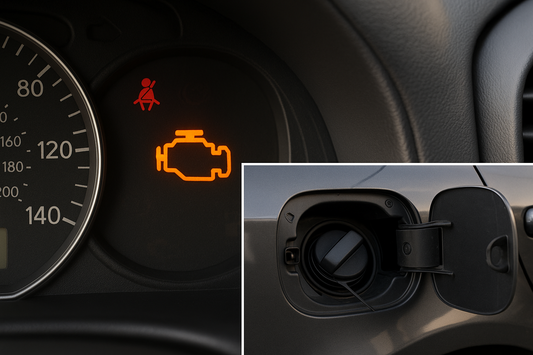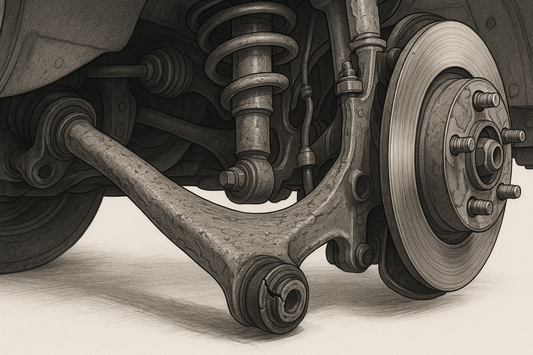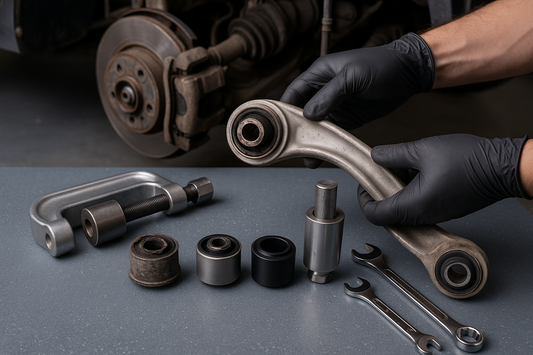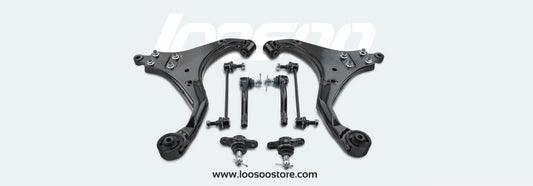Your car’s suspension system is a carefully engineered network of parts working together to keep you safe, comfortable, and in control. At its core? Ball joints—small but critical pivot points that connect control arms to steering knuckles. These unsung heroes (also called "car ball joints" or "bulb joints") absorb road shocks, enable smooth steering, and keep your wheels aligned.
But like any mechanical part, ball joints wear out over time. Ignoring early warning signs can lead to dangerous handling issues, uneven tire wear, or even suspension failure. In this guide, we’ll break down six key symptoms of bad ball joints—plus tips to save on repairs and why addressing them early matters.
What Are Ball Joints, and Why Do They Matter?
A ball joint is a spherical bearing that acts as a flexible hinge between your car’s control arm (upper or lower) and steering knuckle. There are two main types:
- Upper ball joints: Lighter-duty, supporting less weight but critical for steering precision.
- Lower ball joints: Bear most of the vehicle’s weight, making them more prone to wear.
Over time, dirt, moisture, or lost lubrication can degrade the joint’s protective boot, causing the metal ball to rub against its socket. This wear leads to looseness—one of the first signs of failing ball joints.
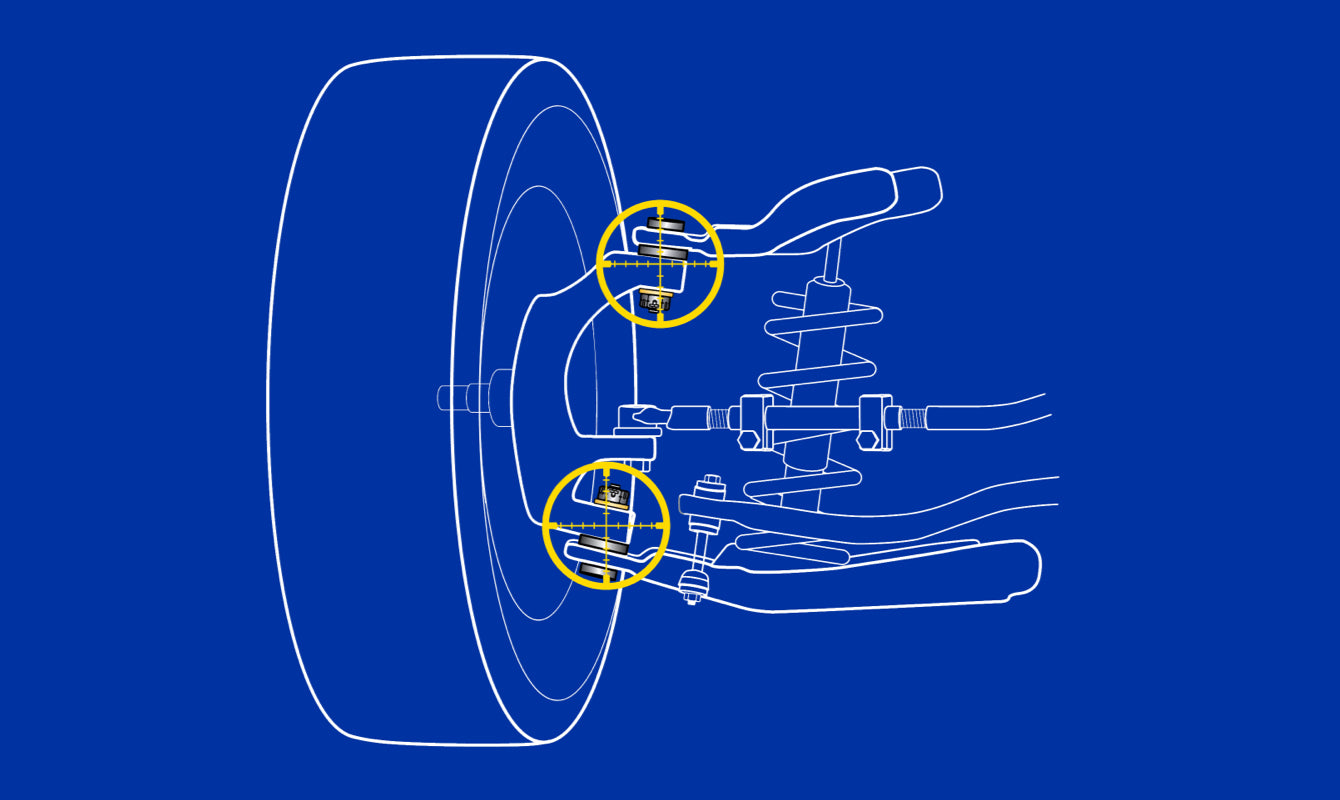
6 Red Flags of Bad Ball Joints
Catching these symptoms early can save you from costly repairs (like ball joints replacement cost) and keep you safe on the road.
1. Excessive Vibration Through the Steering Wheel or Floorboard
A worn ball joint creates play in the suspension, causing your wheels to bounce unpredictably. You’ll feel this as:
- Steering wheel shimmy: Noticeable at 45–60 mph, especially on rough roads.
- Floorboard vibration: A "rumbling" sensation under your feet, often worse when accelerating.
Why it happens: Loose ball joints (especially lower ones) can’t stabilize the wheel, leading to uneven tire contact with the road.
2. "Steering Wander": Your Car Drifts Side-to-Side
If your car feels "loose"—wandering off course even on straight roads—bad ball joints may be to blame. This happens when:
- The joint’s looseness allows the wheel to tilt inward or outward (toe misalignment).
- You have to constantly adjust the steering wheel to stay in your lane.
Pro Tip: If wander worsens after hitting a pothole, check your lower ball joint—they take the brunt of impact.
3. Squeaking, Creaking, or Clunking Noises
Noises are often the first sign of trouble. Listen for:
- Squeaks/creaks: High-pitched sounds when turning or going over bumps (dry lubricant in the joint).
- Clunks/knocks: Louder "thuds" when accelerating, braking, or driving over speed bumps (metal-on-metal contact from worn bearings).
Note: These sounds may come from either upper or lower ball joints—have a mechanic inspect both.
4. Uneven Tire Wear (Inner or Outer Edges)
A failing ball joint throws off wheel alignment, causing tires to scrub against the road. Look for:
- Feathering: Tread edges worn smooth on one side, rough on the other.
- Cupping: Deep, scalloped grooves (common with lower ball joint wear, as they support more weight).
Cost Alert: Ignoring this can shorten tire life by 30–50%—and ball joints replacement cost is cheaper than new tires!
5. Visible Play in the Wheel (DIY Test)
Want to check for bad ball joints yourself? Here’s a simple test:
- Jack up the front of the car (support with jack stands).
- Grasp the tire at 12 o’clock and 6 o’clock.
- Wiggle the tire—if you feel "play" (movement), your ball joints are likely worn.
Why it works: Loose ball joints allow the wheel to rock vertically, a clear sign of wear.
6. Damaged Suspension Components (Control Arms, Bushings)
A bad ball joint creates extra stress on nearby parts:
- Control arms: May bend or crack from uneven forces.
- Suspension bushings: Wear faster due to misalignment.
- Shock absorbers: Overwork to compensate for instability.
Red Flag: If your mechanic mentions "ball joint control arm damage," replacing the joint and arm may be necessary.

Ball Joints Replacement Cost: What to Expect
Ball joints replacement cost varies by vehicle, but here’s a rough guide:
- Lower ball joint replacement: $150–$400 per joint (parts + labor).
- Upper ball joint replacement: $100–$300 per joint (less labor-intensive).
Factors that affect cost:
- Vehicle make/model: Luxury cars (e.g., BMW, Mercedes) have pricier parts.
- Ball joint type: Premium sealed units (like Loosoo’s durable series) cost 10–20% more but last longer.
- Alignment needed: After replacement, a wheel alignment ($80–$150) ensures even tire wear.
Loosoo Tip: Loosoo’s ball joints are designed for 50% longer life than generic brands—ideal for trucks or SUVs with heavy loads.
Why Ignoring Bad Ball Joints is Dangerous
Driving on worn ball joints isn’t just about cost—it’s about safety. A completely failed ball joint can:
- Cause the wheel to detach (rare but possible at high speeds).
- Make steering unresponsive during emergencies.
- Lead to a sudden loss of control on wet or icy roads.
How to Extend Ball Joint Life
Prevent premature wear with these tips:
- Inspect annually: A mechanic can check for play or boot damage.
- Avoid potholes: Impact damage is a top cause of lower ball joint failure.
- Lubricate (if serviceable): Some ball joints have grease fittings—lubricate every 30,000 miles.
Final Take: Don’t Ignore These Signs
Ball joints are the backbone of your suspension—catching wear early saves you from stress, danger, and high repair bills. If you notice vibration, noise, or uneven tire wear, don’t wait. Visit a trusted mechanic (or check Loosoo’s affordable replacement parts) to get your car back to safe, smooth driving.







